Numery archiwalne
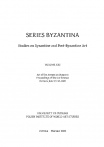
Vol. XXI: Art of the Armenian Diaspora, Waldemar Deluga (ed.)
Contents: WALDEMAR DELUGA, Introduction; CORNELIA HORN, Rereading Armenian Art Historical Evidence and Literary Sources: A New Context for the “Acts of Heraclius” and the Relief on the North Portal of the Church of Mren; LEE BEAUDOEN, From the Golden Aple to the Heigts of Ararat: Intersection between Armenian Material Cultural scholarship and Byzantium; EMMA CHOOKASZIAN, 11th century Evangelist Portraits from a Gary Tatingtian’s Collection; PETRA KOŠTÁLOVÁ, Pilgrims’ Encounters with Alterity: Cultural Heritage of Armenian Traveller from Poland; PIOTR KONDRACIUK, Churches in Zamość. Between tradition and local form; ANATOLE UPART, Santa Maria Egiziaca: The Armenian national church early Modern Rome; BÁLINT KOVÁCS, A positivist archivist or a tourist? Armenian wooden churches in the travel account of Minas Bžškeanc’; MARIAM VARDANYAN, Grec or “Athos Crosses” in the Armenian Churches of Romania; SATENIK CHOOKASZIAN, Armenian silver belts from the collection of the National Gallery of Armenia (end of 19 century – beginning of 20 century); SATENIK VARDANYAN, Armenian Church art in the Russian Empire at the beginning of 20 century; ZOLTÁN GERÁLY, Diaspora or homeland? A brief overview of the Armenian heritage in the North Caucasus; ANNA KARAPETIAN, The Forging of Armenian Art in the Czech Republic.
Materiały z konferencji w Ostrawie w 2022 roku.
University of Ostrava, Polish Institute of World Art Studies, Ostrava – Warsaw 2023 ISSN 1733-5787 (174 pp.)
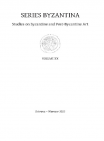
Vol. XX: WALDEMAR DELUGA (ed.)
Contents: WALDEMAR DELUGA, Introduction; TIMUR BOBROVSKY, Sophia of Kyiv National Reserve, History of the Sacristy of St. Sophia Cathedral in Kyiv; YURII KORENIUK, St. Michael’s Golden-domed Monastery in Kyiv and the History of its Art Heritage; OKSANA LASTOVSKA, The Golden Gate in Kyiv; OLENA SERHIY, The High Altar in the Cathedral of the Dormition, Kyiv-Pechersk Lavra; ALINA KONDRATIUK, Church of the Savior in Berestove in Kyiv; MARIIA HELYTOVYCH, Ukrainian Iconostasis of the 16th Century. An attempt of Reconstruction; MARTA FEDAK, Creativity of the Master of the Icon "Passions of the Christ" in 1593 from Velyke; CLAIRE BRISBY, St. Catherine in Lviv, 1698: the trans-national translation of an image from Crete and Sinai to Samokov via Lviv.
University of Ostrava, Polish Institute of World Art Studies, Ostrava – Warsaw 2022 ISSN 1733-5787 (128 pp.)
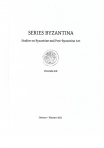
Vol. XIX – WALDEMAR DELUGA (ed.)
Spis treści: Introduction (WALDEMAR DELUGA); WITALI MICHALCZUK, In memory of Irina Tatarova (23 I 1964–30 X 2021); ARTICLES: СЕЙРАНУШ СОСОВНА МАНУКЯН, Фрecки армянскoгo монастыря Замка в Румынии; PETR BALCÁREK, “Grisaille” on vellum: Images of St Nicholas the Wonderworker and the Archangel Michael in “Commune incliti Polonie regni (fols. 1 rec. and 293 ver.); CLAIRE BRISBY, From Peter Mstislavets’ Gospel Book (Vilnius 1575) in the Bulgarian National Library; SHORT NOTES: WALDEMAR DELUGA, Thesaurus Sacrarum Historiarum: The Bible in the 16th century Flemish masters’ illustrations. Exhibition in Lviv; SOFIA KOROL, The Modest Sosenko (1975–1920) Project of the Andrey Sheptytsky National Museum in Lviv.
University of Ostrava, Polish Institute of World Art Studies, Cardinal Stefan Wyszyński University, Ostrava – Warsaw 2021
ISSN 1733-5787 (90 pp.)
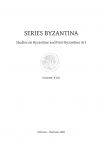
Vol. XVIII – Nowosielski, WALDEMAR DELUGA (ed.)
Spis treści: MICHAŁ JANOCHA, Jerzy Nowosielski and his Bizantine Inspirations; KRYSTYNA CZERNI, The Painter in Hell: Against the Manichaean Vision of Reality in Jerzy Nowosielski’s Art and Thought; BOGNA KOSMULSKA, Eros and Agape in Jerzy Nowosielski’s Thought; MARIA POPRZĘCKA, Bindings and Enslavements. Suffering in the Art of Jerzy Nowosielski; HENRYK PAPROCKI, Jerzy Nowosielski’s Theology: Trought Despair of the Resurrection; ВИТАЛИЙ МИХАЛЬЧУК, Письмо о Новосельском. Православие как модель искусства; ŁUKASZ HAJDUCZENIA, The Liturgy as Art. Throughts by Jerzy Nowosielski on Christian Worship; ИРИНА ТАТАРОВА, Ежи Новосельский: икона как условие. Вступительные замечания к изучению проблематики творчества и мысли Ежи Новосельского.
University of Ostrava, University of Warsaw, Polish Institute of World Art Studies, Cardinal Stefan Wyszyński University, Ostrava – Warsaw 2020
ISSN 1733-5787 (122 pp.)
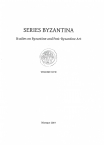
Vol. XVII - WALDEMAR DELUGA (ed.)
Contents: WALDEMAR DELUGA, Introduction; PETRA KOŠŤÁLOVÁ, Conversion of Polish Armenians and Other „Aghets“ According to Colophons of Simeon Lehatsi; ROKSOLANA KOSIV, Icons from Wola Wyzna and Swiatkowa Mala churches of the Master Yakiv from Rybotycze 1670-1680-s; BEATA BIEDROŃSKA-SŁOTOWA, Exhibitions of Armenian Art in Poland; KATARZYNA WINNICKA, JUSTYNA SPRUTTA, WALDEMAR DELUGA, Shortes Notes
Polish Institute of World Art Studies, Cardinal Stefan Wyszyński University, University of Ostrava 2019
ISSN 1733-5787
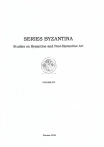
Vol. XVI - WALDEMAR DELUGA (ed.)
Contents: WALDEMAR DELUGA, Introduction; CLAUDE MUTAFIAN, La Roumanie et les manuscrits arméniens; S. PETER COWE, Selected Armenian Poems on Caffa (Theodosia) from the Ottoman Period (1475-1774); MARIYA HELYTOVYCH, Hodegetria from the Chapel of Armenian Archbishops in Lviv. Clarifying Attribution; SATENIK CHOOKASZIAN, The Decoration of St. All Saviour Cathedral of New Julfa; RUBEN ATOYAN, The Cartographic Heritage of the Mekhitarist Congregation.
Polish Institute of World Art Studies, Cardinal Stefan Wyszyński University, University of Ostrava 2018
ISSN 1733-5787 (82 pp.)
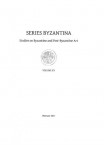
Vol. XV - Art of the Armenian Diaspora. Proceedings of the Second Conference, Gdańsk, June 16th–18th, 2016, WALDEMAR DELUGA (ed.)
Contents: WALDEMAR DELUGA, Introduction; LEVON CHOOKASZIAN, About Miniaturist Grigor Mlijetsi and the Illustrations of the Lviv Gospels of 1197; EMMA CHOOKASZIAN, La vision du Prophète Daniel dans le Lectionnaire du Prince Het‘um II; INESSA DANIELYAN, The Collection of Armenian Illuminated Manuscripts in Isfahan and the Gospel of Kirakos of Tabriz (1330 A. D.); SARAH LAPORTE, La Nouvelle-Djoulfa (Ispahan), une nouvelle culture de l’image. Illustration du truchement arménien – Une Asie en trompe-l’œil; MARIAMA VARTANYAN, The Collection of Silver Book Bindings of the Armenian Museum in Bucharest and their Relationship to Eastern and Western Arts; PIOTR KONDRACIUK, Wood-carved Ornaments in the Armenian Tenement- Houses of Zamość; IRYNA HAYUK, The Unknown about the Well-known: the Issue of the Attribution of Some Armenian Wonder-working Icons from the Сathedral of Assumption of the Holy Virgin in Lviv; ROKSOLANA KOSIV, A 17th Century Embroidered Cope from the Armenian Cathedral in Lviv; MAGDALENA M. OLSZEWSKA, When did Stanislaw August Poniatowski come to Lipków?; MAGDALENA TARNOWSKA, Rafał Hadziewicz (1803–1886) – His Life and Art; LUSINE SARGASYAN, The Manuscript Heritage of an Armenian Intellectual from Gherla – Zacharia Gabrushian (A Source Study); THEMISTOKLIS PAPADOPOULOS, Les Arméniens de la Grèce modern: situation démographique linguistique et educative.
Polish Institute of World Art Studies, Cardinal Stefan Wyszyński University, University of Ostrava 2017
ISSN 1733-5787 (200 pp.)
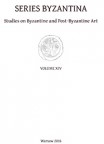
Vol. XIV - WALDEMAR DELUGA (ed.)
Contents: WALDEMAR DELUGA, Introduction; LESZEK MISIARCZYK, The Beginning of the Cult of Relics in Martyrium Polycarpi in 17th–18th century; JUSTYNA SPRUTTA, Translations of the varrior Saints Dragon-Slayers’ Relics in Byzantium; ALEKSANDRA SULIKOWSKA-BEŁCZOWSKA, Incorruptibility and division: the cult of saints’ relics in Byzantium and in Slavonic countries; AGNIESZKA PIÓRECKA, Raška school of architecture in the context of medieval Serbian architecture; NAZAR KOZAK, Akathistos cycle in Supraśl revisited.
Polish Institute of World Art Studies, Cardinal Stefan Wyszyński University, Warsaw 2016
ISSN 1733-5787 (96 pp.)
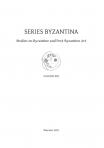
Vol. XIII - WALDEMAR DELUGA (ed.)
Contents: WALDEMAR DELUGA, Introduction; ANNA GŁOWA, Remarks on the relationship between architectonic and metalwork decoration in Late Antiquity; JUSTYNA SPRUTTA, Le culte et l’iconographie de Saint Théodore dans la tradition byzantine; NEVENA DZHURKOVA, The scene of the “Old Testament Trinity” in Preobrazhenski monastery – iconographic and theological unity; MICHAŁ JANOCHA, Nike et Notre Dame. À l’occasion du vingtième anniversaire de la mort du père Janusz St. Pasierb; BRANKA IVANIĆ, Janos Aknay’s Visual Search from an Image to the Icon.
Polish Institute of World Art Studies, Cardinal Stefan Wyszyński University, Warsaw 2015
ISSN 1733–5787 (68 pp.)
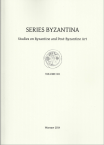
Vol. XII - WALDEMAR DELUGA (ed.)
Contents: WALDEMAR DELUGA, Introduction; AGNIESZKA GRONEK, Eschatological elements in the schemes of paintings of high iconostases; NATALIA KOLPAKOVA, Saint George: Artistic and stylistic peculiarities of Galician Icons in the 14th–16th centuries; RÉMI TERRYN, L’église de Treskavac et ses peintures murals et liens avec l’«école» de Kastoria à la fin du XVème siècle; IKA MATYJASZKIEWICZ, Human – Absolute – Paintings. Golden Apses in Byzantine Art and in Venetian Paintings of Renaissance; WALDEMAR DELUGA, Between Candia and Venise. The role of European engravings in the iconographic transformations of post-Byzantine painting in Greece.
Polish Institute of World Art Studies, Cardinal Stefan Wyszyński University, Warsaw 2014
ISSN 1733-5787 (109 pp.)
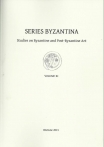
Vol. XI - WALDEMAR DELUGA (ed.)
Contents: Articles: WALDEMAR DELUGA, Introduction; AGNIESZKA GRONEK, Difficulties in determining the period in which Saint Onuphrius’ operated in Posada Rybotycka; SVETOZARA RATSEVA, The mural “Spinning discs” – in Indication for Spiritual Connections and Artistic Influences; JOANNA TOMALSKA, Supraśl iconostasis; KATARZYNA BOGACKA, Insignia of Roman Catholic Bishops influenced by Byzantine Art. Nineteenth- and twentieth-century examples; Exhibitions and Discoveries: MICHAŁ JANOCHA, Commentaire du catalogue de l’exposition “Sainte Russie. L’art russe des origins á Pierre le Grand”; MIROSŁAW PIOTR KRUK, Exhibition “Czerwień – the Stronghold between the East and West”, The National Museum in Krakow, 5th April – 1st Sept., 2013 – remarks on the Old Rus’ art; ANA DUMITRAN, “Icon from Transylvania: Romanian art – European heritage”, temporary exhibition opened in the exhibiting area Of “1st December 1918”, University of Alba Julia (Romania), during 25th April – 15th June 2013; MAGDALENA ŁAPTAŚ, The heritage of the Christian art and architecture in Medieval Lebanon. Report.
Polish Institute of World Art Studies, Cardinal Stefan Wyszyński University, Warsaw 2013
ISSN 1733-5787 (120 pp.)
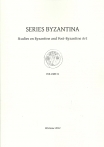
Vol. X - WALDEMAR DELUGA (ed.)
Contents: WALDEMAR DELUGA, Introduction; AGNIESZKA GRONEK, The Officiating Bishops of the Fresco Cycle in the Church of St. Onouphrios, Posada Rybotycka: the Problem of their Identification; DARIUSZ MILEWSKI, The two missions of Petar Parchevich to Poland; VANYA SAPUNDZHEVA, The cults of St. Rocco and St. Haralambos in the Eastern Mediterranean and in the Balkans; CORNEL TATAI-BALTĂ, The Icon of the Virgin Which Shed Tears at Bishop Petru Pavel Aron’s Death (1764); ILIANA ZARRA, The synthesis of a new iconography under the stimulus of emerging Greek liberation; TARAS STEFANYSHYN, Sacred Art in Ukrainian Art Studies of Lviv in the 1920s–1930s. Personalities, works, tendencies; ANCA BRĂTULEANU, Quelques notes sur la modernite de la recherche architecturale de Georg Balş; IRYNA HAYUK, Yaroslav Dashkevych.
Polish Institute of World Art Studies, Cardinal Stefan Wyszyński University, Warsaw 2012
ISSN 1733-5787 (133 pp.)
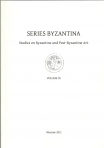
Vol. IX - WALDEMAR DELUGA (ed.)
Contents: WALDEMAR DELUGA, Introduction; HALINA WAŁATEK MCKENNEY, Examples of Armenian Precense and Contacts in Egypt, Nubia and Etiopia from 5th to 16th Century; AGNIESZKA KOZANIECKA-KOZAKIEWICZ, Little Armenia and the Byzantine Wold at the End of the Thirteenth Century. The Case of Maria-Rita-Xene?; BEATRICE TOLIDJIAN, The Round Church at Preslav: an Armenian Transplant?; PATRICK DONABÉDIAN, Un des premiers exemples d’hybridation : l’architecture armènienne de Crimée (Xie – Xve siècle); VIKTORIA BULGAKOVA, Ein Löwenrelief aus Sougdaia: zur Definitions problematik des Kunststils der spätmittelalterlichen Krim; MURAT HASRATIAN, Les églises d’Ispahan et affinités architecturales arméno-iraniennes aux XVIIe et XVIIIe siècle; SARAH LAPORTE-EFTEKHARIAN, Art de la diaspora armènienne. L’évolution des arts visuels au XVIIe siècle à la Nouvelle-Djoulfa ; DIKRAN KOUYMJIAN, Reflections on Objects with Armenian Inscriptions from the Pre-Twentieth Century Diaspora; SERAFIM SEPPÄLA, Interpretation of Mountains in Armenian Miniatures; ELENA ENE D-VASILESCU, The Art of the Armenian Romania : Its Reality and Its Perception in Time ; IOAN CHINDRIS, ANCA ELISABETA TATAY, An Armenian Man of Culture and Artist from Transylvania. Zacharias Gábrus (Zacharija Gabrušjan) and His Heraldic Manuscript; GEORGE BOURNOUTIAN, The Conversion of the Armenian Community of Lvov to Catholicism: Who was Responsible?; ANGÈLE KAPOÏIAN, Siméon de Pologne : le diacre de Zamość (1584/5 – après 1639); PIOTR KONDRACIUK, Armenian Art in Zamość; AGNIESZKA SZYKUŁA-ŻYGAWSKA, New information on the life and activities of Fr Kajetan Deberdasiewicz; JOANNA RYDZKOWSKA, The Art of Armenian Miniaturists from Tokat Functioning in the Republic of Poland in 16th and 17th Century; KAROLINA WIŚNIEWSKA, Armenian Illuminated Codices in the Collection of the National Library in Warsaw; RUBEN ATOYAN, Map of Kamenets Podilskyj from various Epochs and the Armenian Herritage; AGNIESZKA BENDER, Armenian Artisans and Traders of Decorative Arts in the First Polish Republic. Status of Research and Proposed Directions for Further Study; MARIA CYBULSKA, EWA ORLIŃSKA-MIANOWSKA, Armenian Fabric from the Collection of National Museum in Warsaw – Analysis, Reconstruction and Identification; MAGDALENA STOYANOVA, Armenian Gilt Leather and Silk in Europe 15th – 17th Centuries. Problems of Attribution and Conservation; BEATA BIEDROŃSKA-SŁOTA, Armenian Silk Sashes; VARVARA BASMADJAN, Fascinante Constantinople. Les regard des artistes arméniens de Bolis au XIXème siècle; ALYSON WHARTON, The Balyan Family and Paris; STEFANIA KRZYSZTOFOWICZ-KOZAKOWSKA, Teodor Axentowicz un Arménien polonaise et européen; IRYNA HORBAN, Musée arménienen de Lviv; IRINA HAYUK, Some Features of Armenian Culture and the Diaspora (on the Basis on the Analysis of the Ukrainian Museum Collections). Poblems of Stuidying their Development; SAMWEL AZIZYAN, Sacred and Civil Architectural Monuments of Armenians in Ukraine. Legal Aspects; ZOFIA DUKIELSKA, Who do Polish Armenians Feel Today? Selected Aspects of the Polish-Armenian Self Identity.
„Art of the Armenian diaspora´ Proceedings of the Conference, Zamość, April 28th–30th, 2010
Polish Society of Oriental Art, Cardinal Stefan Wyszyński University, Warsaw 2011
ISSN 1733-5787 (299 pp.)
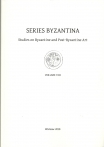
Vol. VIII – PIOTR Ł. GROTOWSKI, SŁAWOMIR SKRZYNIARZ (eds.)
Contents: PIOTR L. GROTOWSKI, Preface; ATHANASSIOS SEMOGLOU, L’éloquence au service d’archéologie. Les «enfants aimés» de Theodore Métochite et sa bibliothèque dans le monastère de Chora; LILIYA M. EVSEEVA, Liturgical Drama as a Source of Monreale Mosaics; ALEXEI LIDOV, Spatial Icons. A Hierotopic Approach to Byzantine Art History; ANDREAS RHOBY, On the Interaction of Word and Image in Byzantium:The Case of the Epigrams on the Florence Reliquary; TASSOS PAPACOSTAS, Byzantine Rite in a Gothic Setting: Aspects of Cultural Appropriation in Late Medieval Cyprus; PIOTR Ł. GROTOWSKI, Defi ning the Byzantine Saint- Creating a Message in Orthodox Art; ANGELIKI LYMBEROPOULOU, Fourteenth-century Regional Cretan Church Decoration: the Case of the Painter Pagomenos and his Clientele; MAJA KOMINKO, Constantine’s Eastern Looks: The Elevation of the Cross in a Medieval Syriac Lectionary; PIO PETRINEC, Metal Objects of Byzantine Origin in Medieval Graves from Croatia; KRISTINA LAVYSH, Finds of Byzantine Glass and Ceramics on the Territory of Belarus: Well-Known and New Facts; MIROSŁAW P. KRUK, On some Objects in the National Museum in Krakow and Question of their Origin: Athos or other Monasteries?; NILS STADJE, Die byzantinische und osmanische Keramik von Agios Elias und Palaiochori Zaverdas auf der Plaghia-Halbinsel in Nordwestgriechenland. Ein Vorbericht; WALDEMAR DELUGA, Die Lemberger Forschung zur Kunst der othodoxen Kirche; MICHAŁ JANOCHA; Serge Averintsev. Byzantinologie dans la perspective humaniste; ANNA MICHAŁOWSKA, MATTHEW SAVAGE, DANIEL TERKL, DiFaB- Digital Research Archive for Byzantium.
[Materiały konferencji „Towards Rewriting? New Approaches to Byzantine Archaeology and Art”, Cracow, 08–10.09.2008 / Papers presented at the conference “Towards Rewriting? New Approaches to Byzantine Archaeology and Art”, Cracow, 08–10.09.2008]
Polish Society of Oriental Art, Cardinal Stefan Wyszyński University, Jagiellonian University, Pontifical University of John Paul II
ISNN 978-83-928399-2-7 (301 pp.)
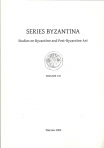
Vol. VII – WALDEMAR DELUGA, MICHAŁ JANOCHA (eds.)
Contents: WALDEMAR DELUGA, Introduction; MONIKA OŻÓG: The Church and Its Influence on Representative Art between the 2nd and 4th Century A.D.; VLASTIMIL DRBAL, Socrates in Late Antique Art and Philosophy: The Mosaic from Apamea; PAWEŁ WRÓBLEWSKI, Could Worship make a Place Holy? (Landscape, Architecture and Liturgy in Holy Places in the Early Church); ADAM LEVINE, Materiality and Divinity in the Earliest Sinai Icons; DARLENE L. BROOKS HEDSTROM, Monastic Delta Designs: An Archaeological Assessment of the Late Antique Dwellings and Settlements in Coptic Egypt; GILLIAN PYKE, Decoding a Decorative Scheme: The Church in the Tomb of Panehsy at Amarna in Middle Egypt; TOMASZ SOWA, Restoration of the Empire. A Search for a New Identity. Ethiopian Architecture in the 10th–13th-Centuries and Byzantine Artistic Interrelation of the 11th–12th Centuries; ANETA PAWŁOWSKA, Selected Motifs of Ethiopian Iconography; JOANNA RYDZKOWSKA, Toros Roslin – an Artist between the West and the East; ELENA ENE D-VASILESCU, Spiritual Ascent in a Sinaite Monastery: The Icon of the Ladder; NATALIA TRIFONOVA, Монашеские темы в стенописи полоцкой Спасской церкви [Monastic themes in the wall painting in the Polotsk Saviour’s Church]; MARIA OŁDAKOWSKA, The Encouter of East and West. Some Remarks on Marvelous Images; ADRIANA ADAMSKA, Pedagogy of the Icon in the Contemporary World; MARTA NAGY: Изображения святых в современной иконописи Венгрии с точки зрения иконографии и иконологии [Representations of saints in the contemporary icon paintings in Hungary from the point of view of iconography and iconology]
[Materiały konferencji „Sztuka chrześcijańska pogranicza Azji, Afryki i Europy, Zakroczym, 06–08.05.2008 / Papers presented at the conference “Christian Art in the Borderlands of Asia, Africa and Europe”, Zakroczym, 06-08.05.2008)
Polish Society of Oriental Art, Cardinal Stefan Wyszyński University, Warsaw 2009
ISNN 978-83-928399-1-0 (148 pp.)
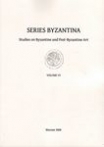
Vol. VI - WALDEMAR DELUGA, MICHAŁ JANOCHA (eds.)
Contents: WALDEMAR DELUGA, Introduction; ANCA BRATULEANU, The First Masonry Church of the Orthodox community in Lviv; MARINA ILEANEA SABADOS, L’iconostase de Moldoviţa: un repère dans l’évolution de l’iconostase moldave; DARIUSZ MILEWSKI, Between a Magnate and a Cossack – Two Marriages of Vasile Lupu’s Daughters; ELENA ENE D-VASILESCU, Romanian Treasures in the Monastery of St Catherine, Mount Sinai; CORNEL TATAI-BALTĂ, Les sources européennes de la gravure sur bois de Blaj; CLAIRE BRISBY, The Role of Orthodox Religious Engravings in the Samokov Painters’ Archive: Visual Prototypes?; ATHINA I. TSIGKAROPOULOU, Studies of Hagiographer Guilds in the Region of Macedonia during the 18th and 19th Centuries. The Lampou Family: the Earliest Hagiographer Family from Kolakia.
Polish Society of Oriental Art, Cardinal Stefan Wyszyński University, Warsaw 2008
ISBN 978-83-928399-0-3 (116 pp.)
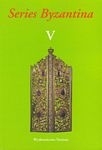
Vol. V - WALDEMAR DELUGA, MICHAŁ JANOCHA (eds.)
Contents: MICHAŁ JANOCHA, WALDEMAR DELUGA, Wstęp [Introduction]; JANUSZ CZERSKI, Liturgia bizantyńska ikoną historii zbawienia [Byzantine liturgy as the history of Salvation icon]; DANIEL PRÓCHNIAK, Kilka uwag o układzie przestrzennym, wyposażeniu i dekoracji kościołów armeńskich [Some remarks on the spatial arrangement, furnishing, and decoration of Armenian churches]; STANISŁAW KOBIELUS, Matka Boża z chusteczką – encheirionem [Virgin Mary with an ornamental handkerchief – encheirion]; PIOTR GROTOWSKI, Dwie bizantyńskie plakiety z kości słoniowej w zbiorach Muzeum Książąt Czartoryskich (problem autentyczności w świetle badań konserwatorskich i analizy stylowej) [Two Byzantine ivory plaques in the collection of Princes Czartoryski’s Museum: The issue of authenticity in the light of conservatorial studies and style analysis]; MICHAŁ JANOCHA, Miniatura Podwyższenia Krzyża Świętego w Menologionie Bazylego II [The Elevation of the Holy Cross miniature in the Menologion of Basil II]; GRAŻYNA KOBRZENIECKA-SIKORSKA, Portret księcia Jarosława Mądrego z rodziną w Sofii kijowskiej. Próba odczytania pierwotnego układu kompozycji [The portrait of Prince Jaroslav the Wise and his family in Kiev Sophia: An attempt to read the original composition]; AGNIESZKA BARANOWSKA, Haftowany epitrachelion z drugiej połowy XVI wieku w katedrze włocławskiej [The embroidered epitrachelion from the second part of the 16th century in Włocławek Cathedral]; ANNA WARZECHA, Haftowana zasłona na ikonę z końca XVI wieku ze zbiorów Muzeum Książąt Czartoryskich w Krakowie [The embroidered icon curtain of the end of the 16th century from the collection of Princes Czartoryski’s Museum in Krakow]; MAREK WOJNAROWSKI, Sąd Ostateczny – ikonografia a liturgia [The Last Judgment: iconography and liturgy]; WALDEMAR FRANCISZEK WILCZEWSKI: Rzeczy „ruskie – moskiewskie” w kościołach rzymskokatolickich diecezji wileńskiej w świetle akt wizytacyjnych i inwentarzy z XVII wieku [“Russian–Muscovite” objects in the churches of the Vilna Roman Catholic diocese in the light of visitation records and inventories from the 17th century]; ZBIGNIEW OLCZAK, Liturgiczny kult u staroobrzędowców bezpopowców [Liturgical cult among the Old-Rite Bespopovtsy (the Priestless)]; ALEKSANDRA SULIKOWSKA-GĄSKA, Staoobrzędowa Komunia apostołów z kolekcji Muzeum Narodowego w Warszawie [Old-Rite Communion of the Apostles from the collection of the National Museum in Warsaw]; AGNIESZKA GRONEK, Szata graficzna XVIII- i XIX-wiecznych poczajowskich Molitwosłowów jako wyraz zachodniej interpretacji Liturgii Godzin [The layout of the 17th- and 18th-century Pochayiv Molitvoslov prayer books as an expression of Western interpretation of the Liturgy of the Hours]; OLEH RUDENKO, Przemiany wnętrz świątyń ukraińskich na przełomie XIX i XX wieku [Transformations of Ukrainian church interiors at the turn of the 19th century]; MARTA WIRASZKA: Przebudowa kościoła pokarmelickiego w Kamieńcu Podolskim na prawosławny sobór Matki Boskiej kazańskiej w latach 1867–1878 – próba określenia form stylowych [Rebuilding of the former Carmelitan Church in Kamenets Podolskiy as the Orthodox church of Holy Virgin Mary of Kazan in 1867–1878].
[Materiały konferencji „Oriens ex alto. Sztuka i liturgia w Kościele Wschodnim”, Warszawa 25-26.10.2005 / Papers presented at the conference “Oriens ex alto. Art and Liturgy in the Ortodox Church”, Warsaw 25-26.10.2005]
Wydawnictwo Neriton, Warszawa 2007; ISBN 978-83-7543-008-0 (180 pp.)
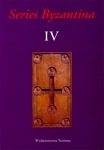
Vol. IV - WALDEMAR DELUGA, MICHAŁ JANOCHA (eds.)
Contents: WALDEMAR DELUGA, Introduction; MARIUSZ BURDAJEWICZ, JOLANTA MŁYNARCZYK, Elements of the liturgical furniture in an 8th-century church (NWC) in Hippos (Sussita), Israel; MARTA NAGY, Demeter Hadzsi’s Proskynetarion in Jászberény; BRANCA IVANIĆ, Pilgrimage in Medieval Serbia and proskynetaria – pilgrims’ icons from Jerusalem; LILYA BEREZHNAYA, “His foundation in the Holy Mountains.” Some remarks on the New Jerusalem symbolism in the age of Mazepa; Bibliography of Polish Byzantine and Post-Byzantine studies (compiled by ANETA BOJANOWSKA, ANNA BORKOWSKA, ANNA CZERWIŃSKA, IZABELA IWANICKA, MAGDALENA KŁOS, MAGDALENA LACHOWSKA, MAGDALENA ŁUKASIEWICZ, REV. NORBERT MOJŻYN, MAGDALENA STASIAK, REV. MAREK WOJNAROWSKI)
Wydawnictwo. Neriton, Warszawa 2006; ISBN 83-88973-97-5 (156 pp.)
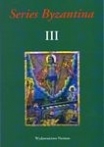
Vol. III - WALDEMAR DELUGA, MICHAŁ JANOCHA (eds.)
Contents: WALDEMAR DELUGA, Introduction; MAT IMMERZEEL, Proskynetaria from Jerusalem. Souvenirs of a Pilgrimage to the Holy Land; MAT IMMERZEEL with the co-operation of WALDEMAR DELUGA and MAGDALENA ŁAPTAŚ, Proskynetaria – Inventory; OTTO F. M. MEINARDUS, 17th-century Armenian proskynetaria of Jerusalem; WALDEMAR DELUGA, Les Proskynetarion gravées du XVIIIe et XIXe siècles; MIROSŁAW PIOTR KRUK, Motifs of the rotunda in scenes of the deposition of saints into the tomb in Ruthenian icons; MAGDALENA TARNOWSKA, Pilgrimage souvenirs in the collection of the Commissariat of the Holy Land of the Franciscan Order in Cracow.
[Materiały konferencji “Proskynetaria z Jerozolimy. Pamiątki z pielgrzymek do Ziemi Świętej|, Warszawa 09-10.10.2003 / Papers presented at the conference: „Proskynetaria from Jerusalem. Souvenirs of Pilgrimage to the Holy Land”, Warsaw 09–10.10.2003]
Wydawnictwo. Neriton, Warszawa 2005; ISBN 83-89729-34-2 (96 pp.)
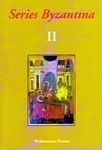
Vol. II - WALDEMAR DELUGA, MICHAŁ JANOCHA (eds.)
Contents: WALDEMAR DELUGA, Wstęp [Introduction]; BARBARA DĄB-KALINOWSKA, Warsztat historyka sztuki i źródła [Art historian’s apparatus and sources]; KS. MICHAŁ JANOCHA, Słowa a obraz: źródła literackie do dziejów estetyki i sztuki bizantyńskiej [Words and image: literary sources for the history of Byzantine aesthetics and arts]; JÓZEF NAUMOWICZ, Posąg Chrystusa z Paneas w źródłach patrystycznych i bizantyńskich [The Statue of Christ from Paneas in patristic and Byzantine sources]; PIOTR ŁUKASZ GROTOWSKI, Konstantynopol w oczach Haruna ibn Yahja i Dobryni Jędrzejkowicza – kilka uwag o wartości relacji przybyszów odwiedzających stolicę Cesarstwa [Constantinople in the eyes of Harun ibn Yahja and Dobrynia Jędrzejkowicz: some remarks on the value of travel relations by visitors to the capital of the Empire]; TAMARA SZTYMA, Wpływy tradycji żydowskiej w sztuce wczesnochrześcijańskiej i bizantyńskiej [The influence of Jewish tradition on the early Christian and Byzantine art]; SŁAWOMIR SKRZYNIARZ, Domniemany podręcznik malarski Ulpiosa (Elpiosa) Rzymianina [The alleged painting handbook by Ulpius (Elpios) the Roman]; BOŻENA MIERZEJEWSKA, Parresia i moc wstawiennictwa świętych. Przedstawienia wiernych ze świętymi patronami w malarstwie nubijskim [Parrhesia and the intercession of the saints: representations of the faithful and their patron saints in Nubian painting]; ROMUALD BISKUPSKI: Ikona Zaśnięcia Matki Boskiej z końca XV wieku w cerkwi w Andrzejówce [The icon with the Virgin Mary Falling Asleep from the end of the 15th century in the Orthodox Church at Andrzejówka]; MIROSŁAW P. KRUK, Hymnograf Stefan czy hymnograf Teofan. Problem identyfikacji pieśniopiewcy w ikonach zachodnioruskich [Stephen the Hymnograph or Theophan the Hymnograph: The problem of songwriter identification in Western Ruthenian Irons]; ANNA SIENKIEWICZ-BARTOSZCZUK, Przedstawienia św. Onufrego na ziemiach polskich [Reprezentations of St Onouphry in the territory of Poland]; ALEKSANDRA SULIKOWSKA-GĄSKA, Objawienie Świętej Trójcy jako temat żywotów i ikon św. Aleksandra Swirskiego. Na marginesie „polityki” religijnej metropolity Makarego XVI wieku [The Revelation of the Holy Trinity as a theme of Alexander Swirsky’s lives and icons: reflections on Metropolite Macary’s religious policy in the 16th century]; GRAŻYNA KOBRZENIECKA-SIKORSKA, Źródła historiograficzne do badań rosyjskich ikon maryjnych [Historiographic sources for studying Russian Marian Icons]; KRYSTYNA MART, Phoenix Jakuba Suszy do badań ikonografii Matki Boskiej Chełmskiej [From Jakub Susza’s Phoenix to studies in iconography of Virgin Mary from Chełm]; ANDRZEJ GIL, Źródła kultu ikony Matki Boskiej Chełmskiej. Z dziejów religijności w XVII-wiecznej Rzeczypospolitej [Sources of the Cult of Virgin Mary’s icon from Chełm: on the history of religiousness in the 17th-century Polish-Lithuanian Commonwealth]; ZOJA JAROSZEWICZ-PIERESŁAWCEW, Zdobnictwo elementarzy tłoczonych cyrylicą w XVI–XVIII wieku w oficynach Wielkiego księstwa Litewskiego [The decorative art of primers in Cyrillic alphabet from the printing presses of the Great Duchy of Lithuania in the 16th–18th centurie]; AGNIESZKA ZAGRAJEK, Rękopiśmienny, greckokatolicki Irmołogion z końca XVII w. jako przykład kultury pogranicza chrześcijańskiego Wschodu i Zachodu. Analiza ikonograficzna [Greek Catholic Irmologion from the end of the 17th c. as an example of the culture of borderland between Christian West and East: Iconographic analysis]; AGNIESZKA GRONEK, Recepcja legendy o świętej Weronice w XVII-wiecznym ukraińskim malarstwie ikonowym [Reception of St Veronica’s legend in the 17th century Ukrainian icon painting]; ROMAN ZILINKO, Przyczynek do ikonografii cyklów niedziel Pięćdziesiątnicy w ukraińskich ikonostasach drugiej połowy XVII – pierwszej połowy XVIII wieku [A contribution to the iconography of Pentecost Sunday Cycles in Ukrainian iconostases in the second part of the 17th c. and first part of the 18th century]
Wydawnictwo. Neriton, Warszawa 2004; ISBN 83-88973-97-5 (268 pp.)
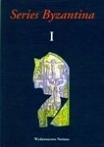
Vol. I - WALDEMAR DELUGA, MICHAŁ JANOCHA (eds.)
Contents: WALDEMAR DELUGA, MIROSŁAW P. KRUK, Studies on Byzantine and Post-Byzantine Art in Central and Eastern Europe; SERGEJ KLIMOVSKI, Two new stone icons from Kiev; LARISA ČLENOVA, A Byzantine relief St. George with the scenes of his life; PIOTR GROTOWSKI, The legend of St. George Saving a Youth from Captivity and its depiction in art; ALEKSANDRA SULIKOWSKA, “New Constantinople.” Byzantine tradition in Muscovite Rus’ in the 16th century; MARIA HELYTOVYČ, Icons of the 1560s associated with “Dmytrij”; CONSTANTA COSTEA, Une nouvelle réplique slavonne du Paris gr. 74 – seven decades after; MIROSLAW P. KRUK, The Lvov Oktoich of 1630 in the collection of the Jagiellonian Library in Cracow; OKSANA YURCHYSHYN-SMYTH, The printing house of the Monastery of Trei Ierarhi in Iasi and its staff; AGNIESZKA GRONEK, On the dependence of Ruthenian Passion presentations on Western graphics in the 16th to 18th centuries
Wydawnictwo Neriton, Warszawa 2003; ISBN 83-88973-65-7 (178 pp.)


